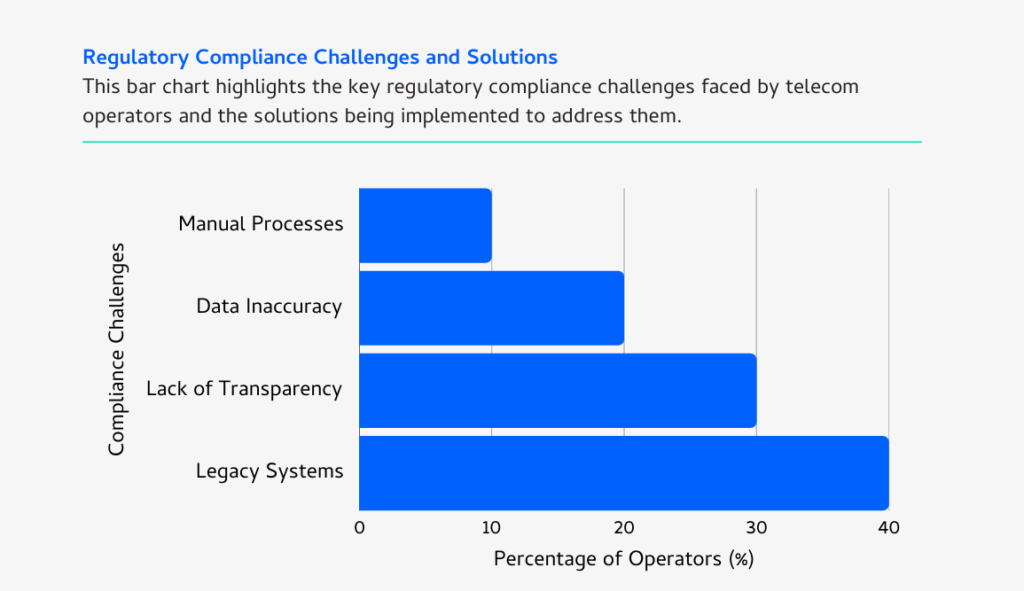Telecom regulatory compliance has become a top priority for operators worldwide. As telecom operators face increasing pressure from regulators to align internal cost models with externally mandated pricing structures, the ability to demonstrate transparency and compliance is necessary. Especially as revenue pressure mounts and accusations of unfair pricing become more frequent.
“Telecom is no longer a slow-moving industry. It’s become geopolitical, globally exposed, and under pressure from all sides – financial, regulatory, and infrastructural.” — Carl Halewood, Telecom Finance Expert
Synchronizing Internal and External Reporting
Traditional costing models, often maintained in spreadsheets or outdated legacy tools, are poorly equipped to meet modern regulatory standards. Regulators now require operators to justify pricing through cost-based methodologies, such as LRIC (Long Run Incremental Cost), and often demand separate reporting on network versus retail cost structures. This introduces both a compliance burden and a strategic opportunity.
Aligning internal cost views with regulatory frameworks ensures consistency across pricing, investment decisions, and reporting. It also provides defensibility when regulators raise questions about margin squeezes or market dominance claims. In Belgium, for example, the telecom regulator BIPT recently conducted margin squeeze tests at the product level, requiring operators to separate network and retail costing and justify margins using LRIC-based methodologies. Similar scrutiny is emerging across Europe, as national regulators update their methods and expect operators to prove cost-based pricing integrity. The expectation is clear: cost transparency must be granular, auditable, and regulator-ready.
Belgium’s Regulator Raises the Bar
In 2024, Belgium’s telecom regulator (BIPT) conducted margin squeeze tests on Proximus and other SMP operators, including their fiber and mobile service portfolios. Instead of just looking at overall pricing levels, BIPT demanded product-level margin validation, separating out network vs. retail costs and applying LRIC-based logic.
The message was clear: compliance now requires granularity. Operators that lacked structured, transparent cost models struggled to respond. No penalties were issued, but the expectation was set.
For finance professionals, it’s a signal: costing models must now withstand both commercial scrutiny and regulatory interrogation.
Margin Squeeze Tests Are Ongoing, Not One-Off Events
Margin squeeze tests are not typically a one-off event. They are often revisited on a regular basis, typically every six months or annually, as regulators recognize the ongoing risk of market power abuse through pricing strategies. Even if a telecom operator passes the test in one period, there is always the potential for price changes in the next.
This necessitates a continuous, robust system for monitoring and reporting—one that goes beyond ad-hoc, Excel-based solutions. A more structured, long-term approach is required, warranting investment in a dedicated tool.
Organizations that adopt structured, auditable systems gain more than just the ability to respond quickly during audits. They establish a solid foundation for long-term regulatory alignment. This approach not only reduces friction in reporting but also enhances transparency, enabling telecom companies to foster greater internal confidence in their financial data and compliance efforts.
Reducing Audit Pain and Compliance Risk
Many operators still rely on manual Excel models or an outdated, incompatible system for regulatory submissions. While flexible, these models are inherently opaque, difficult to audit, and highly error-prone. This exposes organizations to compliance risk, especially as regulatory demands grow in complexity.
By shifting to purpose-built solutions, operators can:
- Generate regulator-ready reports on demand
- Maintain clear audit trails for all assumptions and inputs
- Reduce manual workload and eliminate model inconsistencies
Regulatory alignment is not just about satisfying the authorities. It’s about ensuring that internal decision-making and external accountability are synchronized. Operators who embed compliance into their architecture gain both strategic clarity and regulatory confidence.
“What telecom operators need now is agility. The ability to iterate on models, maintain full transparency, and adapt to regulatory or commercial shifts without waiting weeks to run a new scenario. That’s what modern finance teams expect.” — Sander den Hartog, CEO, CostPerform

Setting the Standard, Not Just Following It
In many markets, regulatory bodies are still evolving their expectations around pricing transparency, cost allocation, and AI- or platform-driven bandwidth usage. This creates uncertainty but also an opportunity.
Operators with structured, auditable models are better positioned not just to comply, but to lead. By proactively sharing clear logic and demonstrating internal consistency, they can influence how standards are set. Regulators welcome clarity, and operators who provide it early often help shape the frameworks that others must later adopt.
Cost transparency isn’t just about defensiveness. It’s a way to lead the conversation.
“What these telcos need now is agility. Iterative modeling, full transparency, and flexibility to respond to regulatory and commercial shifts without waiting weeks to run a new model. That’s what modern telecom finance requires.” — Sander den Hartog, CEO, CostPerform
Telecom Regulatory Compliance Starts with Transparency
Telecom regulatory compliance is accelerating in both complexity and frequency. To stay ahead, operators need more than spreadsheets, they need structured transparency and the agility to respond quickly.
By aligning internal reporting with external expectations, companies not only reduce audit pain but build strategic resilience in an evolving regulatory world.
Want to learn more?
See how BT navigated complex regulatory requirements using CostPerform, read the BT and CostPerform case study to learn best practices and avoid common pitfalls.
